It can be worrying when your furry friend refuses to eat. There are several reasons why your dog won’t eat, ranging from health issues to behavioral aspects. Understanding these reasons will help you determine the right approach to encourage your pet to eat again.
Health Issues
One of the most serious reasons why your dog won’t eat might be due to health problems. Here are some common health-related causes:
- Dental Problems: Painful teeth or gums can make eating uncomfortable for your dog.
- Digestive Issues: Conditions such as nausea, gastroenteritis, or worms may lead to a loss of appetite.
- Infections: Various infections can affect a dog’s ability to eat. Symptoms might include lethargy or vomiting.
- Chronic Illness: Serious diseases like kidney disease or cancer could also contribute to a lack of appetite.
If you suspect any health issues, it’s crucial to consult your veterinarian immediately for a proper diagnosis and treatment.
Environmental Factors
The environment plays a significant role in your dog’s eating habits. Here are factors you should consider:
- Stress: Changes in routine, a new pet, or loud noises can stress your dog, leading to decreased appetite.
- Temperature: Dogs might not want to eat in extremely hot or cold weather. Make sure they are comfortable and hydrated.
- Food Freshness: Dogs can be picky; spoiled or stale food might not be appealing to them.
Dietary Preferences
Sometimes, the food itself can be the issue. Consider the following:
- Flavor: Dogs have preferences. If you have recently switched brands or flavors, they might need time to adjust.
- Texture: Some dogs prefer wet food, while others favor dry. Experiment to see what your dog enjoys most.
If dietary preferences aren’t addressed, your dog might continue to turn its nose up at food.
Behavioral Reasons
Behavior can also significantly influence a dog’s eating habits. Be mindful of these behavioral aspects:
- Attention-Seeking: If your dog refuses food but seeks attention, it may be trying to get you to engage with them differently.
- Overfeeding: If your dog is used to frequent treats, they might refuse their regular meals in favor of snacks.
- Routine Changes: A new schedule or family member can create enough disruption to affect your dog’s eating habits.
Encouraging Your Dog to Eat
Now that you understand various reasons behind your dog’s lack of appetite, you might be wondering how to encourage them to eat. Here are several strategies you can try:
- **Switch Up Meals:** Try a different brand or type of food to see if your dog shows interest.
- **Mix in Toppers:** Adding a bit of chicken broth or canned food may entice your dog to eat.
- **Stick to a Routine:** Feeding your dog at consistent times can create a sense of normalcy.
- **Limit Treats:** Cut back on treats to ensure your dog is hungry at mealtime.
When to See a Vet
If your dog has not eaten for over 24 hours, it’s time to seek veterinary help. Prolonged lack of appetite can lead to serious health risks, including dehydration and malnutrition.
In situations where your dog also displays other concerning symptoms, such as vomiting, diarrhea, or lethargy, don’t wait. Get them examined by a professional to ensure their health is stable. For further reading on pet health and tips, visit AKC or Humane Society.
Dogs, just like humans, can have off days. By understanding why your dog won’t eat and being proactive in addressing the issue, you can help ensure your pet remains healthy and happy. Always consult with your vet for personalized advice and treatment options.
Understanding Your Dog’s Dietary Needs
Every dog owner wants their furry friend to live a happy and healthy life, and a big part of achieving that is understanding their dietary needs. Your dog’s diet impacts their overall well-being, energy levels, and even behavior. Let’s delve into the essentials of proper nutrition for your dog, ensuring they get the nourishment they need.
Key Nutrients for Dogs
Just like humans, dogs require a balanced diet consisting of various nutrients. Here are the key components:
- Proteins: Essential for muscle development and immune function. Sources include meat, fish, and eggs.
- Carbohydrates: Provide energy. Good sources are rice, oats, and vegetables.
- Fats: Important for skin health and energy. Healthy fats can be found in fish oil and flaxseed.
- Vitamins and Minerals: Crucial for various bodily functions. These can be obtained through a diverse diet or supplements if necessary.
Understanding Your Dog’s Age and Breed
Your dog’s age and breed also influence their dietary needs. Puppies require more protein and calories to support growth, while older dogs may need fewer calories to prevent obesity. Breed sizes can also dictate specific nutritional requirements:
- Small Breeds: Typically have higher metabolism rates and may require calorie-dense foods.
- Large Breeds: May need diets formulated to protect against joint issues.
Frequency of Feeding
The number of meals you provide daily can significantly affect your dog’s digestion and energy levels. Most dogs do well with:
- Puppies: 3-4 meals a day until they are about six months old.
- Adult dogs: 2 meals a day is typically sufficient.
- Senior dogs: May benefit from smaller, more frequent meals to aid digestion.
Special Dietary Needs
Some dogs may require special diets due to health conditions. Common issues include:
- Food Allergies: Some dogs can develop allergies to certain proteins, grains, or additives.
- Weight Management: Overweight dogs may require weight control diets that are lower in fat and calories.
- Digestive Problems: Dogs with sensitive stomachs might need easier-to-digest food.
Homemade vs. Commercial Dog Food
Choosing between homemade and commercial dog food can be challenging. Both options come with pros and cons:
- Homemade Food:
- Allows control over ingredients.
- Can be tailored for specific dietary needs.
- Commercial Food:
- Convenient and easy to store.
- Contains essential nutrients formulated by specialists.
Common Signs of Nutritional Deficiency
Being aware of your dog’s health can help you identify potential dietary deficiencies. Look for:
- Dry skin or excessive shedding.
- Unusual behavior or lethargy.
- Poor coat condition.
Consulting Your Veterinarian
Regular veterinary visits remain crucial for evaluating your dog’s dietary needs. Your vet can provide tailored recommendations based on your dog’s health and activity level. They can also suggest specific brands or types of food that meet your dog’s nutritional requirements.
Resources for Further Information
If you want to dive deeper into dog nutrition, consider visiting useful online resources such as:
- American Kennel Club on Dog Nutrition
- ASPCA Dog Nutrition Guide
- Cornell University College of Veterinary Medicine
Understanding and meeting your dog’s dietary needs plays a significant role in their health and happiness. By paying attention to the key nutrients, their specific needs based on age and breed, and considering both natural and commercial diets, you can ensure a balanced diet that supports their overall well-being.
The Impact of Stress and Anxiety on Your Dog’s Appetite
As a devoted dog owner, you may notice that your furry friend sometimes refuses to eat. One significant reason behind this behavior can be stress and anxiety. Understanding the effects of these emotional states on your dog’s appetite is crucial for ensuring their health and well-being.
Dogs, much like humans, can experience stress for various reasons. These can range from changes in their environment to social interactions or even health problems. When a dog is stressed or anxious, their body goes into a heightened state of alertness. This psychological strain may lead to a loss of appetite.
Here are some common causes of stress and anxiety in dogs:
- Separation anxiety when left alone
- Changes in the household, such as a new pet or family member
- Noisy environments, like fireworks or construction
- Traveling or visiting new places
- Health issues that cause discomfort or pain
The physical effects of stress can manifest in several ways. When a dog is anxious, their bodies may produce cortisol, a stress hormone that disrupts the digestive system. This disruption can result in a loss of appetite, making it harder for them to enjoy their meals. In addition, stressed dogs may experience nausea, which further discourages them from eating.
It’s important to identify signs of stress in your dog. Look for telltale signs such as:
- Excessive barking or whining
- Destructive behavior, such as chewing furniture
- Withdrawal from family interactions
- Excessive panting or pacing
- Changes in sleeping patterns
If you suspect that your dog’s reluctance to eat is due to stress or anxiety, consider the following strategies to help manage their emotional health:
- Maintain a routine: Dogs thrive on routine. Ensure consistent feeding times and stick to a regular schedule for walks and playtime.
- Create a calm environment: Provide a quiet and comfortable space for your dog to eat, free from distractions and loud noises.
- Use positive reinforcement: Encourage your dog to eat by rewarding them with praise or treats when they show interest in their food.
- Consider calming aids: Products like anxiety wraps, calming collars, or pet-safe supplements can help ease your dog’s stress.
- Consult a veterinarian: If your dog continues to refuse food for more than 24 hours, consult a veterinarian. They can help determine if there is a medical issue that needs addressing.
It’s also essential to monitor your dog’s food intake carefully. A prolonged lack of appetite can lead to more significant health issues, including malnutrition and dehydration. Your veterinarian can also provide guidance on the best diet options during stressful times to help maintain your dog’s nutritional health.
To further assist in managing your dog’s anxiety, consider engaging in training and socialization activities. Positive exposure to new experiences can help alleviate fears and build their confidence. Enriching their environment with toys and puzzles can also distract and keep them engaged, promoting a more relaxed state.
If anxiety persists in your dog, professional help may be required. A dog trainer or animal behaviorist can provide tailored strategies to address stress and anxiety, particularly if they stem from behavioral or environmental concerns.
Recognizing the impact of stress and anxiety on your dog’s appetite is vital for maintaining their quality of life. By understanding these emotional challenges and taking proactive measures, you can help ensure your furry friend remains healthy and happy.
For more information on dog behavior and how to support your pet during stressful times, visit the American Kennel Club or PetMD.
Health Issues That Can Affect Your Dog’s Eating Habits
If your furry friend suddenly stops eating, it can be alarming. Understanding the health issues that can affect your dog’s eating habits is key to ensuring their well-being. Here, we will explore some common health problems that can cause a loss of appetite in dogs.
First and foremost, dental problems can significantly impact a dog’s desire to eat. Issues such as gum disease, tooth decay, or oral infections can make chewing painful. If you notice your dog is reluctant to eat or is eating less, it’s a good idea to schedule a visit to the veterinarian. Regular dental check-ups can keep your pet’s mouth healthy and prevent these painful conditions.
Another health issue that can affect your dog’s eating is gastrointestinal problems. Conditions like gastritis, pancreatitis, or intestinal blockages may cause nausea or discomfort. If your dog is exhibiting symptoms such as vomiting, diarrhea, or lethargy alongside a lack of appetite, seeking veterinary assistance promptly is essential. Disease of the gastrointestinal tract can lead to serious complications if left untreated.
Stress and anxiety can also lead to changes in eating habits. Dogs are sensitive to their environment and may become anxious due to changes such as moving to a new home, the arrival of a new pet, or even loud noises like thunderstorms. If your dog is stressed, you might notice them eating less or refusing food altogether. Creating a calm environment and providing reassurance can help alleviate their anxiety.
Another factor to consider is the possibility of liver disease. This vital organ plays a crucial role in digestion and metabolism. Symptoms of liver problems can include weight loss, vomiting, and changes in eating patterns. If you perceive these signs, consult a veterinarian for appropriate blood tests and diagnostic evaluations.
Kidney disease can also result in appetite loss. As the kidneys struggle to function, your dog may feel unwell, leading to a decrease in food intake. Common signs include increased thirst, frequent urination, and lethargy. If you suspect kidney issues, a swift trip to the veterinarian is essential.
Age-related issues should not be overlooked. Older dogs can develop conditions like cognitive dysfunction syndrome, arthritis, or other chronic health problems that may affect their appetite. Regular check-ups are vital for senior dogs, ensuring they receive the care they need as they age.
Here’s a quick overview of some health issues that can impact your dog’s appetite:
| Health Issue | Symptoms | Action |
|---|---|---|
| Dental Problems | Pain while chewing, bad breath | Veterinary dental check-up |
| Gastrointestinal Issues | Vomiting, diarrhea, lethargy | Immediate veterinary consultation |
| Stress/Anxiety | Refusal to eat during stressful times | Calm environment and reassurance |
| Liver Disease | Weight loss, vomiting | Blood tests and veterinary evaluation |
| Kidney Disease | Increased thirst, lethargy | Consultation and tests |
| Age-Related Issues | Changes in behavior and appetite | Regular check-ups |
In addition to these health issues, changes in your dog’s diet can also be a factor. If you’ve recently switched their food, they may not have adapted to the new taste or texture. Gradually introducing a new food over several days can help ease the transition.
To support your dog during these tough times, always provide fresh water. Hydration is crucial, especially if your pet is not eating well. Ensuring they have access to clean water can help maintain their health and encourage them to resume eating.
If you’re concerned about your dog’s appetite, don’t hesitate to contact a veterinarian for advice tailored to your pet’s individual needs. Trusted resources such as American Kennel Club or American Veterinary Medical Association offer valuable information on dog health and nutrition that might help you navigate this situation.
Your dog’s health is paramount, and understanding the underlying issues affecting their eating habits can lead to better care and a happier, healthier pet.
Tips for Encouraging a Picky Eater to Enjoy Their Food
If your furry friend has suddenly decided to become a picky eater, you’re not alone. Many dog owners face this challenge at some point. The good news is that there are effective strategies to encourage your dog to eat well again. Try these tips to help make mealtime enjoyable for your canine companion.
Evaluate Their Food
Start by reassessing the food you are offering. Sometimes, dogs might refuse their meals simply because they don’t like the taste or texture. Here are a few points to consider:
- Quality of Ingredients: Choose high-quality dog food made with real meat and whole ingredients. Dogs typically prefer meals that are rich and aromatic.
- Freshness: Make sure the food isn’t expired. Old, stale food can deter your dog from eating.
- Type of Food: Experiment with wet and dry food options. Some dogs prefer canned food over kibble, as it can be more flavorful.
Change Up the Routine
Dogs, like humans, can get bored with their food. Changing the mealtime routine can spark interest. Consider these variations:
- Feeding Schedule: Instead of leaving food out all day, try a strict feeding schedule. Offer the food for a limited time, then remove it, encouraging your dog to eat when it’s available.
- Location: Sometimes, changing the food location can motivate your dog to eat. Try moving the bowl to a quieter space where they can focus.
- Food Toys: Use puzzle toys that dispense food as your dog plays. This stimulates their mental faculties and makes mealtime fun.
Add Flavor and Variety
To entice your pup to eat, adding some flavor to their meals can work wonders. Here are some ideas:
- Broth or Gravy: Pour some low-sodium chicken or beef broth over their food. This can add an appealing aroma and boost taste.
- Mix in Toppers: Consider adding fresh veggies, cooked eggs, or plain yogurt to their meals. Just ensure any additions are safe for dogs.
- Rotate Flavors: If you’re using dry food, try rotating between different flavors or brands to keep things interesting for your dog.
Monitor Health Issues
If your dog refuses to eat for more than a day or shows signs of distress, it’s essential to consult a vet. A sudden change in appetite could indicate health concerns like dental problems or gastrointestinal issues. Regular check-ups are crucial.
Establish a Positive Environment
Creating a positive atmosphere around mealtime can help encourage your dog to eat:
- Be Calm: Maintain a calm demeanor. Dogs can pick up on their owner’s anxiety, which might affect how they feel during meals.
- Remove Distractions: Keep other pets away during mealtime. This encourages your dog to focus on their food without feeling threatened.
- Routine and Ritual: Establish a consistent mealtime routine. Your dog learns when to expect food, making them more likely to eat.
Consult with Experts
If you’re struggling to get your picky eater to eat well, consulting a veterinarian or a canine nutritionist can provide tailored advice. They can help formulate a suitable diet plan according to your dog’s specific needs.
In some cases, switching to a special diet might be necessary. Explore sites like Dog Food Advisor for more insights on dog food options.
Remember, persistence is key, and patience will go a long way. With these strategies, you can help your dog transition back to enjoying their meals. Engaging your dog’s senses and maintaining a positive feeding environment can lead to successful mealtimes.
Conclusion
It’s essential to remain attentive and proactive when your dog won’t eat. Recognizing the common reasons behind their lack of appetite can empower you to take action. Whether it’s a dietary need not being met, a response to stress and anxiety, or underlying health issues, understanding these factors is key to helping your furry friend return to their happy mealtime routine.
Every dog has unique dietary requirements, and being aware of what your pet needs can make a significant difference. Ensuring that your dog’s food is not just appealing but also nutritious is crucial for their overall health. If you spot changes in their eating habits, carefully evaluate their environment and stress levels, as these can significantly impact their appetite.
Moreover, addressing health concerns with a veterinarian is a vital step if your dog’s refusal to eat persists. They can help identify any medical issues that may be affecting your dog’s desire for food.
For picky eaters, a few simple strategies can encourage them to enjoy mealtime again. Experiment with different food textures and scents, or incorporate tasty toppings that appeal to their senses.
By staying observant and responsive, you can help your dog maintain a healthy appetite and ensure that mealtimes are enjoyable. Your love and commitment will make all the difference in your furry companion’s life, bringing them back to their happy and playful selves. Keep their well-being at the forefront, and you’ll soon find the reasons for their disinterest in food addressed effectively.




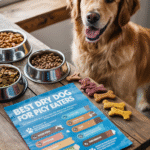
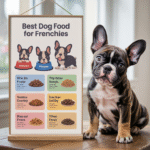
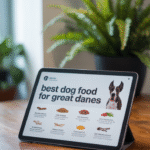

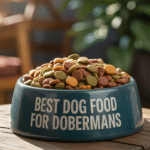


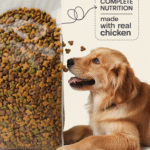


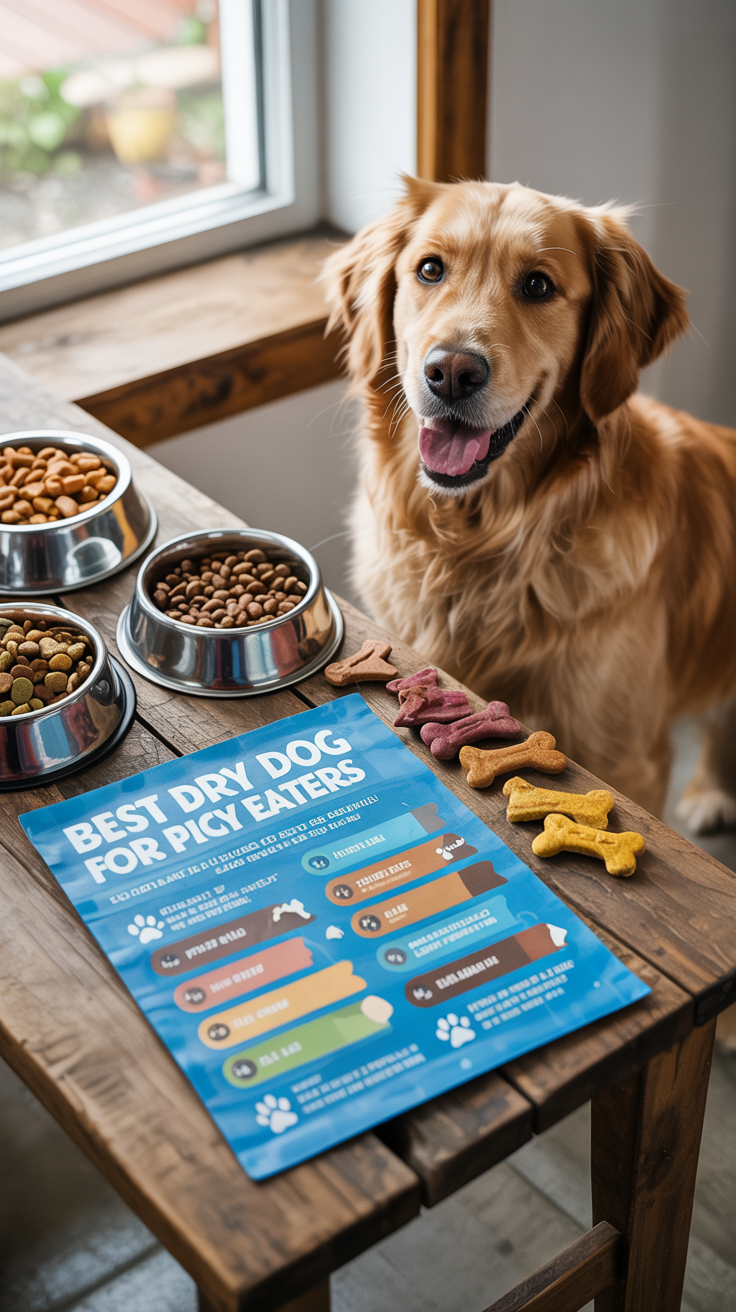
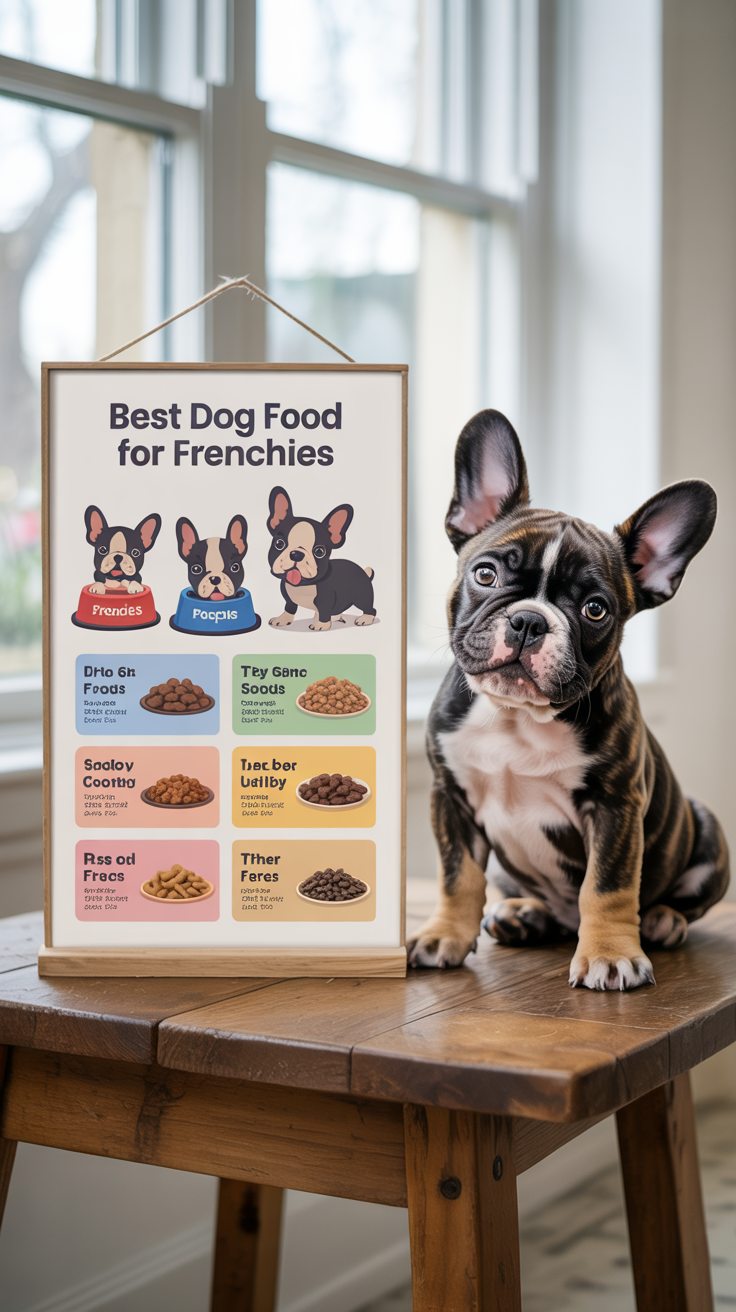
Leave a Reply